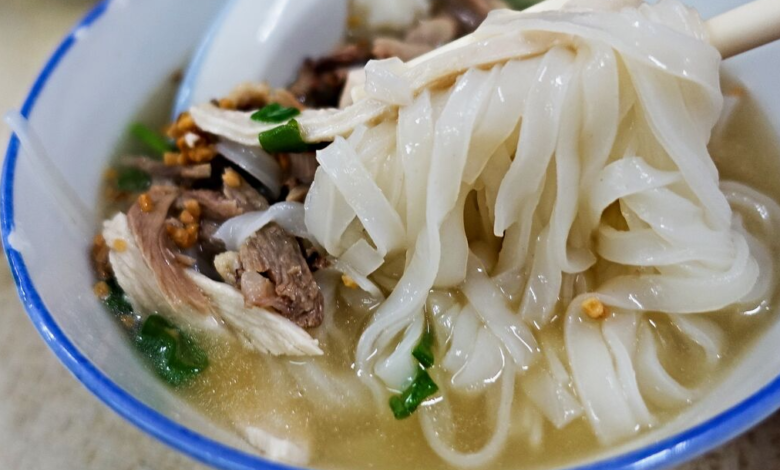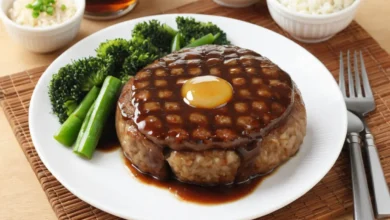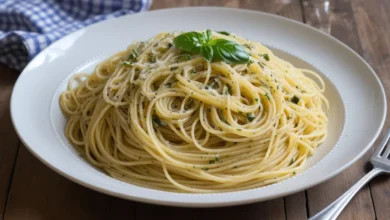Discovering Flat Rice Noodles: A Versatile Delight for Every Meal

Flat rice noodles, a staple in various Asian cuisines, are celebrated for their delicate texture and versatility. Known as “bánh phở” in Vietnam and “kuay teow” in Thailand, these noodles can elevate a wide range of dishes, from stir-fries to soups. Whether you’re a culinary enthusiast or just starting to explore the world of Asian cooking, flat rice noodles offer endless possibilities. In this article, we’ll delve into the various types, health benefits, and how to prepare these delightful noodles while answering common questions.
What Are Flat Rice Noodles?
Flat rice noodles are made from rice flour and water, creating a chewy texture that absorbs flavors beautifully. They come in various widths, ranging from thin to wide, allowing them to be used in different dishes. The noodles are gluten-free, making them an excellent choice for those with gluten sensitivities.
Types of Flat Rice Noodles
- Bánh Phở: These are the wide rice noodles used in Vietnamese pho soup. Their silky texture complements the aromatic broth and tender meat.
- Kuay Teow: Popular in Thailand, these noodles can be found in a variety of dishes, including stir-fries and noodle soups. They are typically broader than bánh phở.
- Rice Vermicelli: While thinner than the traditional flat noodles, they can still be used in dishes that require a delicate texture, such as salads or stir-fries.
Health Benefits of Flat Rice Noodles
Flat rice noodles offer several health benefits:
- Low in Calories: Compared to traditional wheat noodles, flat rice noodles are often lower in calories, making them a great option for those watching their weight.
- Gluten-Free: Made from rice flour, these noodles are naturally gluten-free, making them suitable for individuals with celiac disease or gluten intolerance.
- Rich in Carbohydrates: They provide a good source of energy, especially for those with an active lifestyle.
- Versatile: They can be incorporated into various dishes, making it easy to add them to your diet in different ways.
How to Cook Flat Rice Noodles
Cooking flat rice noodles is simple and quick. Here’s a step-by-step guide:
- Soaking: If using dried flat rice noodles, soak them in warm water for 30-60 minutes until softened. If using fresh noodles, you can skip this step.
- Boiling: Bring a pot of water to a boil. Add the soaked noodles and cook for 2-4 minutes, depending on their thickness. Be careful not to overcook them, as they can become mushy.
- Draining: Once cooked, drain the noodles in a colander and rinse under cold water to stop the cooking process and prevent sticking.
- Stir-Frying or Adding to Soup: Use the noodles immediately in your favorite stir-fry or soup recipes.
Delicious Ways to Enjoy Flat Rice Noodles
1. Pho: This traditional Vietnamese dish features flat rice noodles in a fragrant beef or chicken broth, topped with fresh herbs, bean sprouts, and lime.
2. Pad See Ew: A popular Thai dish, pad see ew consists of stir-fried flat rice noodles with soy sauce, vegetables, and your choice of protein, such as chicken, beef, or tofu.
3. Stir-Fried Noodles: Toss flat rice noodles with your favorite vegetables and protein in a hot wok for a quick and satisfying meal. Add soy sauce, oyster sauce, or a homemade stir-fry sauce for added flavor.
4. Noodle Salads: Combine cooked flat rice noodles with fresh vegetables, herbs, and a light dressing for a refreshing salad perfect for warm weather.
Frequently Asked Questions
1. Can I use flat rice noodles in any recipe?
Yes, flat rice noodles are versatile and can be used in various recipes. However, they work best in dishes where their chewy texture can shine, such as stir-fries or soups.
2. Are flat rice noodles gluten-free?
Yes, flat rice noodles are made from rice flour, making them gluten-free and a suitable option for individuals with gluten sensitivities.
3. How should I store leftover flat rice noodles?
Store cooked flat rice noodles in an airtight container in the refrigerator for up to 3 days. To reheat, add a little water to prevent sticking and microwave or stir-fry until warmed through.
4. Can I make flat rice noodles at home?
Yes, you can make flat rice noodles at home using rice flour and water. Mix the ingredients, steam the batter in a flat dish, and then slice the cooked noodles to your desired thickness.
5. Are flat rice noodles low in calories?
Flat rice noodles are relatively low in calories compared to other pasta types, making them a great option for those looking to maintain or lose weight.
Tips for the Perfect Flat Rice Noodles
- Don’t Overcook: Keep an eye on the cooking time to ensure the noodles remain chewy. Overcooking can lead to a mushy texture.
- Use Plenty of Water: When cooking, use a large pot of boiling water to prevent the noodles from sticking together.
- Experiment with Sauces: Flat rice noodles absorb flavors well, so don’t hesitate to experiment with different sauces to find your favorite combination.
- Add Fresh Herbs: Enhance the flavor and presentation of your dishes by garnishing with fresh herbs like cilantro, basil, or mint.
Conclusion
Flat rice noodles are a delicious and versatile ingredient that can elevate any dish. Whether you’re enjoying a warm bowl of pho or a vibrant stir-fry, these noodles provide a unique texture and taste that complements a variety of flavors. With their health benefits and ease of preparation, flat rice noodles are a fantastic addition to your culinary repertoire. Explore the world of flat rice noodles and discover the countless delicious possibilities that await!





